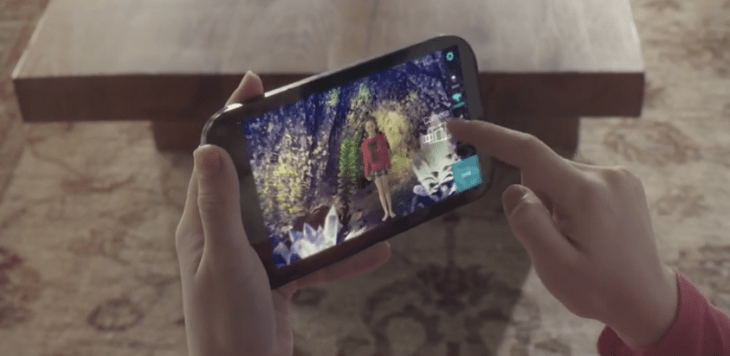Mantis Vision, an Israeli company whose mobile 3D technology is being used by Google for its 3D-sensing Project Tango smartphone, has just announced it’s raised a $12.5 million strategic funding round from a range of mobile focused investors including Qualcomm, through its venture investment group, Qualcomm Ventures; and Samsung.
Flextronics’ hardware venture arm, Lab IX, also invested in the round, along with Chinese optical manufacturing firm Sunny Optical Technology.
Mantis’ core 3D capture platform tech is called MV4D. It offers “motion-capable” 3D range-imaging technology, meaning it can handle the capture of moving as well as static 3D objects.
The engine uses a light pattern projection system coupled with depth sensors and proprietary light-processing algorithms to create a depth map of the captured scene — so that a handheld camera with Mantis components can record 3D data.
The company also makes post-processing software that allows users to edit and view captured 3D data on their mobile devices.
While 3D tech on smartphones is not currently the norm — beyond a brief fad for 3D screens a few years back — interest in mobile 3D is building again. For instance, e-commerce behemoth Amazon is expected to introduce a handset later today that will include some 3D smarts, thanks to four infrared cameras that track the head of the user to deliver stereoscopic effects from a 2D LCD pane.
And, as noted above, Google is also interested in 3D capture on mobile with Project Tango. As, presumably, is Samsung, given its investment here. Apple, meanwhile, acquired another Israeli 3D sensor company, PrimeSense, last November. So the big names in mobile making are lining up to put dollars into 3D-sensing tech.
Mantis, which was founded back in 2005, said the new funding round is its first institutional raise, although it has apparently pulled in more than $25 million in private money since being founded.
It said the new funding will be used to reorganize the company to focus on licensing its core technology and for further development of its software platform and products.
Its initial focus was on building handheld 3D scanners. It’s now shifting to handheld mobile devices — having successfully figured out how to miniaturize the necessary components — applying the software expertise it built up in the scanner space to mobile devices, said Mantis CEO Amihai Loven.
“The core technology is a single frame structured light active triangulation system. Somewhat similar to PrimeSense,” Loven told TechCrunch. “The advancement is the level of code, which will result with the level of signal and quality of 3D data that we can capture. So our focus on day one was high accuracy, high resolution, content creation, as opposed to 3D sensing [and] gesture recognition.
“The goal is to… further penetrate into the mobile [market] by licensing the core technology to OEMs to enable them to get access to hardware components and designs with their supply chain, and to push the software development both at the core level — let’s call it the 3D engine that makes the input of the camera become 3D data — but also an application platform, which is not an application by itself, which is more like an SDK for developers, which allows constant editing, altering and manipulation for sampled 3D data,” he added.
Loven said the mobile market will see many 3D implementations in the next year, but would not comment on specific companies it’s working with or not (beyond the Google partnership which is in the public domain).
Instead, he said there will be a “clear differentiation” between products that have what he called “partial 3D experience and full 3D experiences.”
“We are aiming for devices that allow content creation, content sharing, content manipulation, and there will be probably many products out there and once we go out it will be clear which ones we enable and which no, but I cannot comment at this stage,” said Loven.
In terms of what 3D capture offers the smartphone end user, he argued it will bring more immersive, less passive content experiences than are currently offered by 2D photo and video capture.
“In the next, let’s say two years… people [will] capture people and moments and access the data in a completely different way so they are immersed in the environment, and not just observing it so that it’s a flat representation of something that happened,” he added.
Commenting on the funding in a statement, Mony Hassid, senior director at Qualcomm Ventures, said: “Qualcomm’s investment in Mantis Vision will enable both companies to accelerate the development and adoption of new 3D technologies for mobile devices and services as well as the applications running on top of them.”
“We believe that mobile 3D capture will become an increasingly important, if not primary, means of communication. The Mantis Vision team has proven its ability to create 3D technology and products that deliver,” added Lior Susan, vice president and head of Lab IX, in another statement.
“We are excited about the traction and virality that the MV4D platform can generate in a very short time, and we want to provide the funding and support for this team to extend its leadership in this new and emerging sector.”
